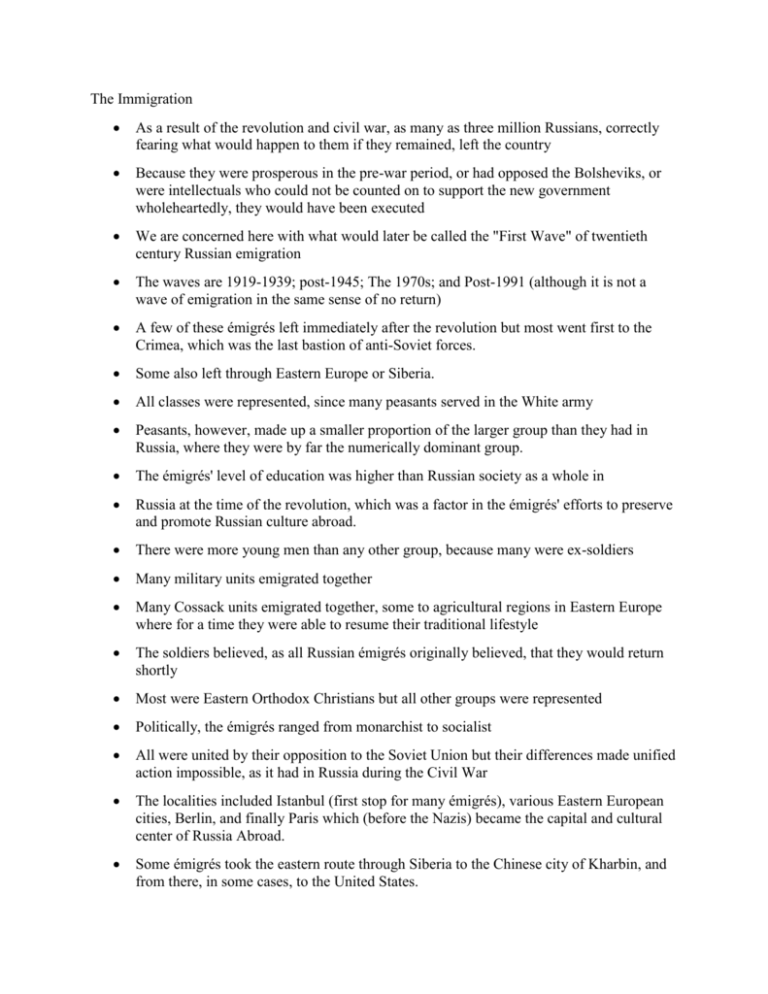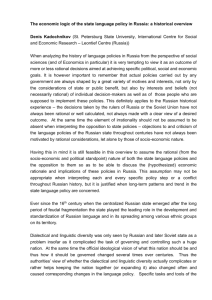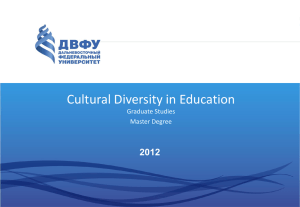The Immigration
advertisement

The Immigration As a result of the revolution and civil war, as many as three million Russians, correctly fearing what would happen to them if they remained, left the country Because they were prosperous in the pre-war period, or had opposed the Bolsheviks, or were intellectuals who could not be counted on to support the new government wholeheartedly, they would have been executed We are concerned here with what would later be called the "First Wave" of twentieth century Russian emigration The waves are 1919-1939; post-1945; The 1970s; and Post-1991 (although it is not a wave of emigration in the same sense of no return) A few of these émigrés left immediately after the revolution but most went first to the Crimea, which was the last bastion of anti-Soviet forces. Some also left through Eastern Europe or Siberia. All classes were represented, since many peasants served in the White army Peasants, however, made up a smaller proportion of the larger group than they had in Russia, where they were by far the numerically dominant group. The émigrés' level of education was higher than Russian society as a whole in Russia at the time of the revolution, which was a factor in the émigrés' efforts to preserve and promote Russian culture abroad. There were more young men than any other group, because many were ex-soldiers Many military units emigrated together Many Cossack units emigrated together, some to agricultural regions in Eastern Europe where for a time they were able to resume their traditional lifestyle The soldiers believed, as all Russian émigrés originally believed, that they would return shortly Most were Eastern Orthodox Christians but all other groups were represented Politically, the émigrés ranged from monarchist to socialist All were united by their opposition to the Soviet Union but their differences made unified action impossible, as it had in Russia during the Civil War The localities included Istanbul (first stop for many émigrés), various Eastern European cities, Berlin, and finally Paris which (before the Nazis) became the capital and cultural center of Russia Abroad. Some émigrés took the eastern route through Siberia to the Chinese city of Kharbin, and from there, in some cases, to the United States. The earliest émigrés resisted what they referred to as "denationalization," i. e., assimilation into the host culture, primarily for two reasons: They believed they were going back and therefore need not assimilate into the "host culture" They believed that Russian émigré society was the true repository of Russian culture There is a great deal of justification for this view. The émigrés fought to preserve the Russian language from what they saw as its deterioration in the Soviet Union They formed their own churches, Russian schools, scouting organizations, veterans' associations, social clubs, businesses, and political parties They attempted to further all phases of Russian art and culture They produced the greatest Russian literature of the 20th century, including the work of Ivan Bunin (1870-1953), who in 1933 became the first Russian to win the Nobel Prize in literature, and Vladimir Nabokov (1899-1977), who wrote several novels about the Russian emigration but then moved to the US, switched to English, and became famous for writing a book called Lolita Ultimately, three historical phenomena led to the assimilation of the émigrés, further emigration to places like Australia and the United States, and general loss of a sense of community: Old age and death (since many were elderly and all had endured tremendous physical and emotional difficulties) The gradual recognition of the Soviet Union by European countries, with a concurrent loss of legal status by the émigrés. The rise of the Nazis and the beginning of World War II After WWII, a great number of citizens of Eastern Europe found themselves displaced by the conflict. Agreements between USSR and Western governments caused forced repatriations which the new refugees resisted A new generation of emigres found themselves in the West This group was more of a middle-class, working class, and peasant mix. No noblility, very few with advanced education or artists. Also much younger over all (young soldiers, young people taken as slave labor by Nazis) New enthusiasm in resistance to Soviet rule Political organization focused on new reality Movement towards what will be after Soviet Union, not return to what was Youth organizations More integrated in local life Church-centered Russian/religious instruction Still mostly Orthodox and social activities centered around churches Also non-Russians, non-Orthodox Late 70/early 80s: Dissident movement Deportations of dissidents New law permitting certain ethnic groups to leave USSR: Jews, then Volga Germans Exodus towards West New Russian enclaves in US (New York, LA) A new attitude from “third wave” Immigrants, not refugees Seeking a new life in West, not temporarily displaced A mixture of origins and skills and temperaments Artists, writers, intellectuals, but also criminals, ordinary people Emigration more similar to that of earlier ethnic groups to the US: see Brighton Beach









